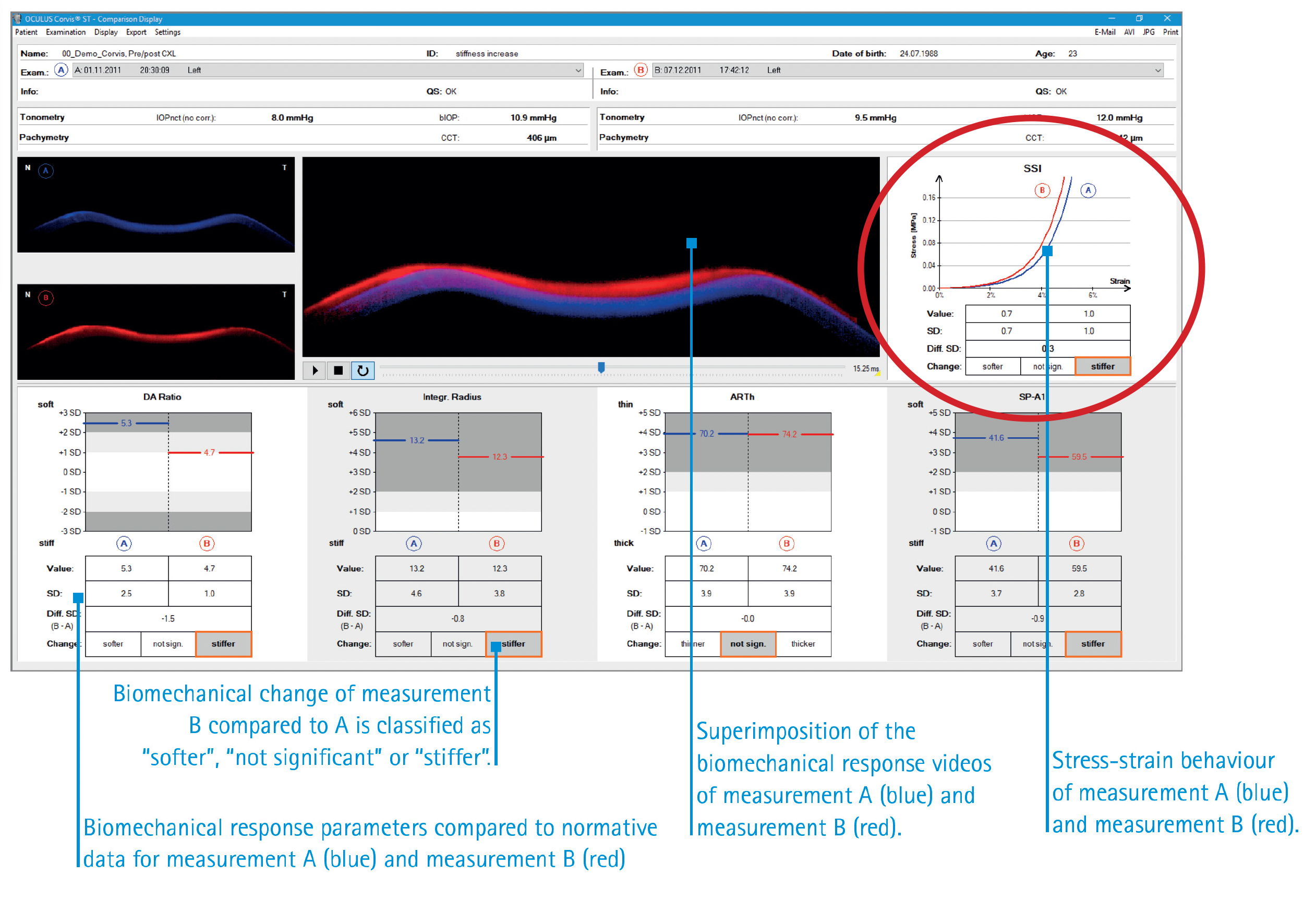 |
|
The association between the stress-strain index and RNFL thickness was significant in the non-high myopic group but not in the highly myopic group. Photo: Oculus. Click image to enlarge. |
Since various properties of corneal biomechanics have been discovered to be associated with ocular diseases such as corneal ectasia, it has been widely used in clinical diagnosis and treatments such as pre- and postoperative evaluation of refractive surgery. Researchers in China attempted to use the stress-strain index provided by the Corvis ST to minimize the impact of IOP. Their findings added novel evidence of the relationship between corneal biomechanics and retinal ganglion cell damage. Eyes with lower stress-strain index had thinner RNFL thickness after adjusting for potential covariates, especially those with higher biomechanical-corrected IOP.
A university-based study contributed to the analysis. In 1,645 healthy students, the RNFL thickness was measured by high-definition OCT, axial length (AL) was measured by IOL Master (Carl Zeiss Meditec), as well as corneal biomechanics including stress-strain index, biomechanical-corrected IOP and central corneal thickness (CCT) were measured by Corvis ST. The mean age of the participants was 19.0 years, and 68.8% were women.
Lower stress-strain index was significantly associated with thinner RNFL thickness, after adjusting for age, CCT, biomechanical-corrected IOP and AL. No significant association between stress-strain index and RNFL was found in men, while the association was significant in women in the fully adjusted model. The association was significant in the non-high myopic group but not in the highly myopic group. Eyes with greater biomechanical-corrected IOP and lower stress-strain index had significantly thinner RNFL thickness.
“Corneal biomechanical examination, especially stress-strain index measurement, could assist in preventing and clinically diagnosing optic neuropathy,” the study authors wrote in their paper. “Moreover, our study adds novel clues for the pathology of ocular diseases such as glaucoma and other optic neuropathies.”
Liu MX, Yin ZJ, Li YZ, et al. Corneal stress-strain index in relation to retinal nerve fiber layer thickness among healthy young adults. Eye (Lond). February 24, 2024. [Epub ahead of print]. |

